Reporting From Antarctica, Week One
December 12, 2018
By Ted Daeschler, PhD
Professor, Department of Biodiversity, Earth & Environmental Science
Associate Curator of Vertebrate Zoology, Academy of Natural Sciences of Drexel University
Week One in Antarctica has been a whirlwind of training workshops and organizational work at McMurdo Station to get ready for the four weeks we plan to spend at our field sites in the interior of this frozen continent.
We arrived on Dec. 3 in a Hercules C-130 aircraft of the Royal New Zealand Air Force after a smooth six-and-a-half-hour flight from Christchurch, New Zealand. Skies were clear, particularly as we approached the Ross Sea and Ross Island, visible through a few small windows in the cavernous fuselage of the plane.
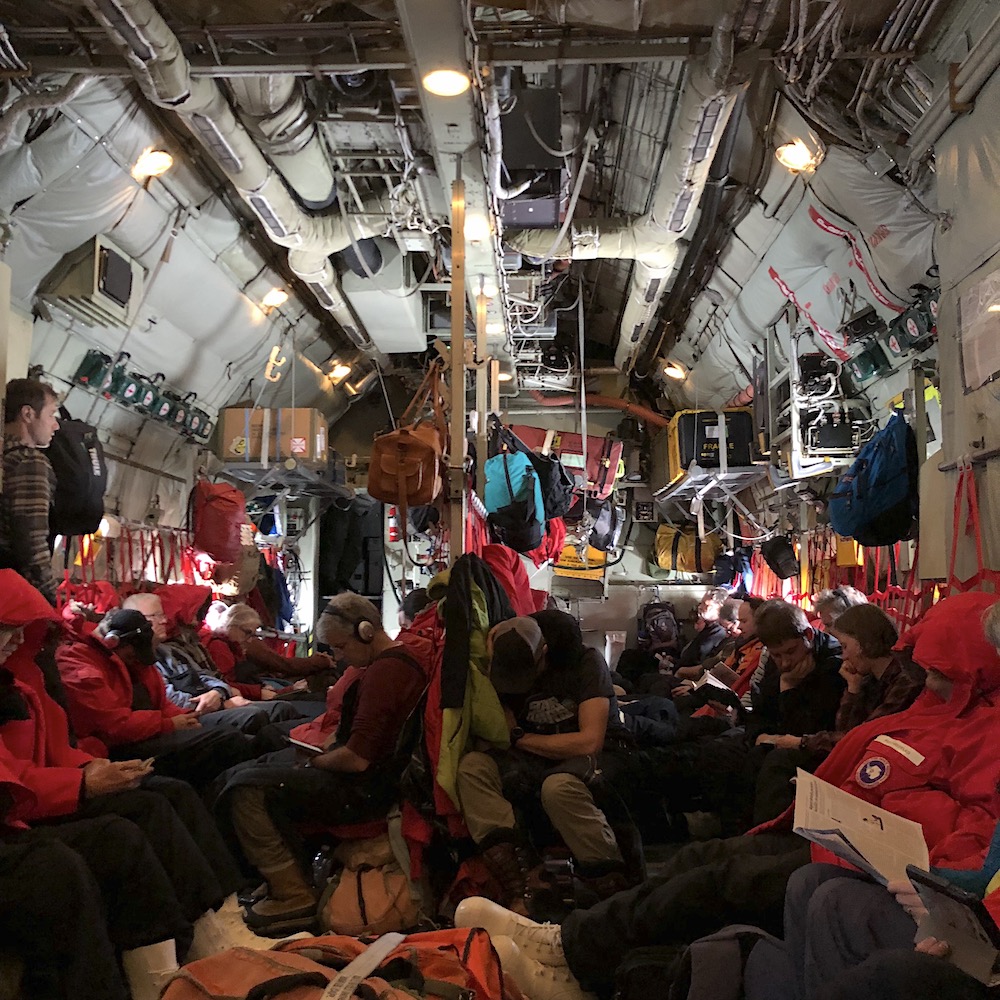 Aboard the Hercules C-130 aircraft of the Royal New Zealand Air Force enroute to the bottom of the globe.
Aboard the Hercules C-130 aircraft of the Royal New Zealand Air Force enroute to the bottom of the globe.
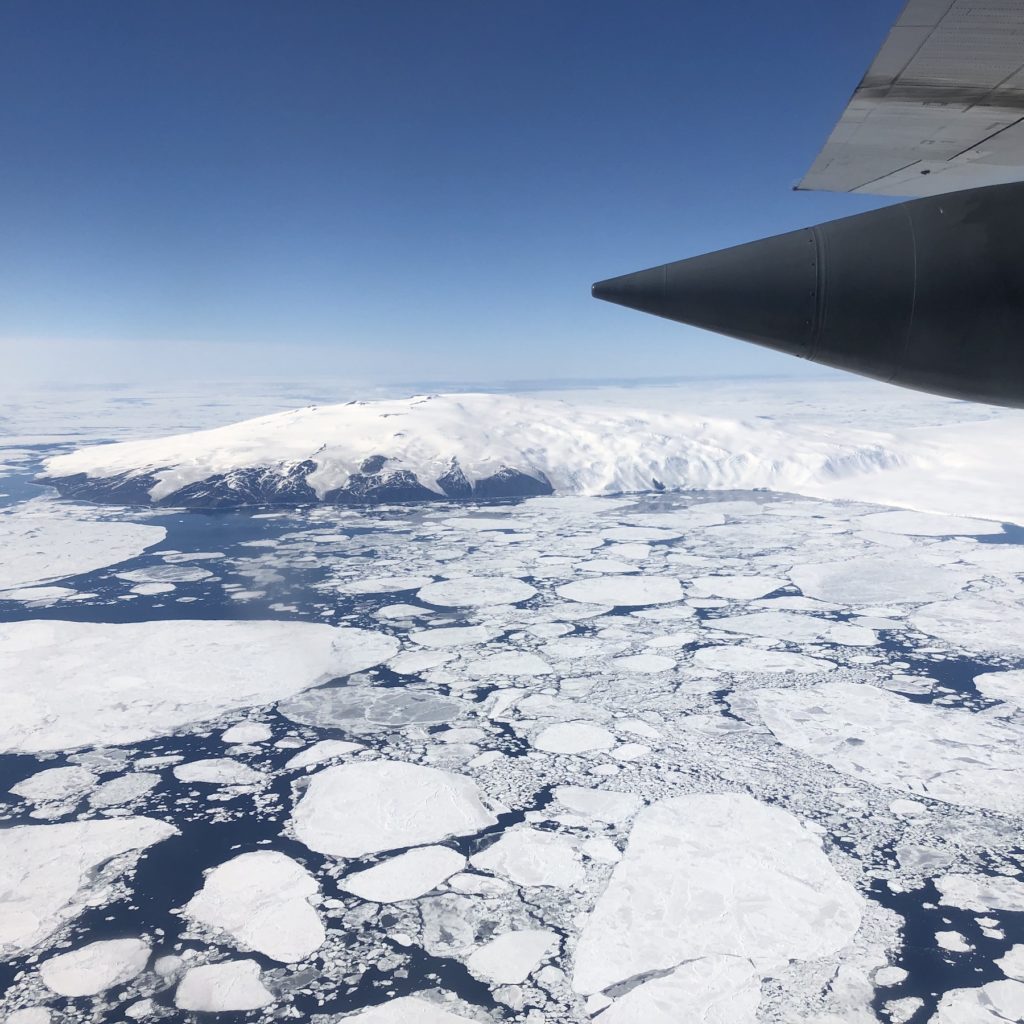 Our first view of the Antarctic continent.
Our first view of the Antarctic continent.
We landed on a runway groomed across the Ross Ice Shelf and emerged through the big plane’s small door into a dazzling white landscape and azure blue sky. The huge Mount Erebus, an active volcano shrouded in a blanket of glaciers and snow, loomed over the scene.
After a long, slow ride in the old Terra Bus we rode to transition off the ice and onto the dark volcanic rock of the Hut Point Peninsula, we reached McMurdo Station, an amazing research facility run by the National Science Foundation.
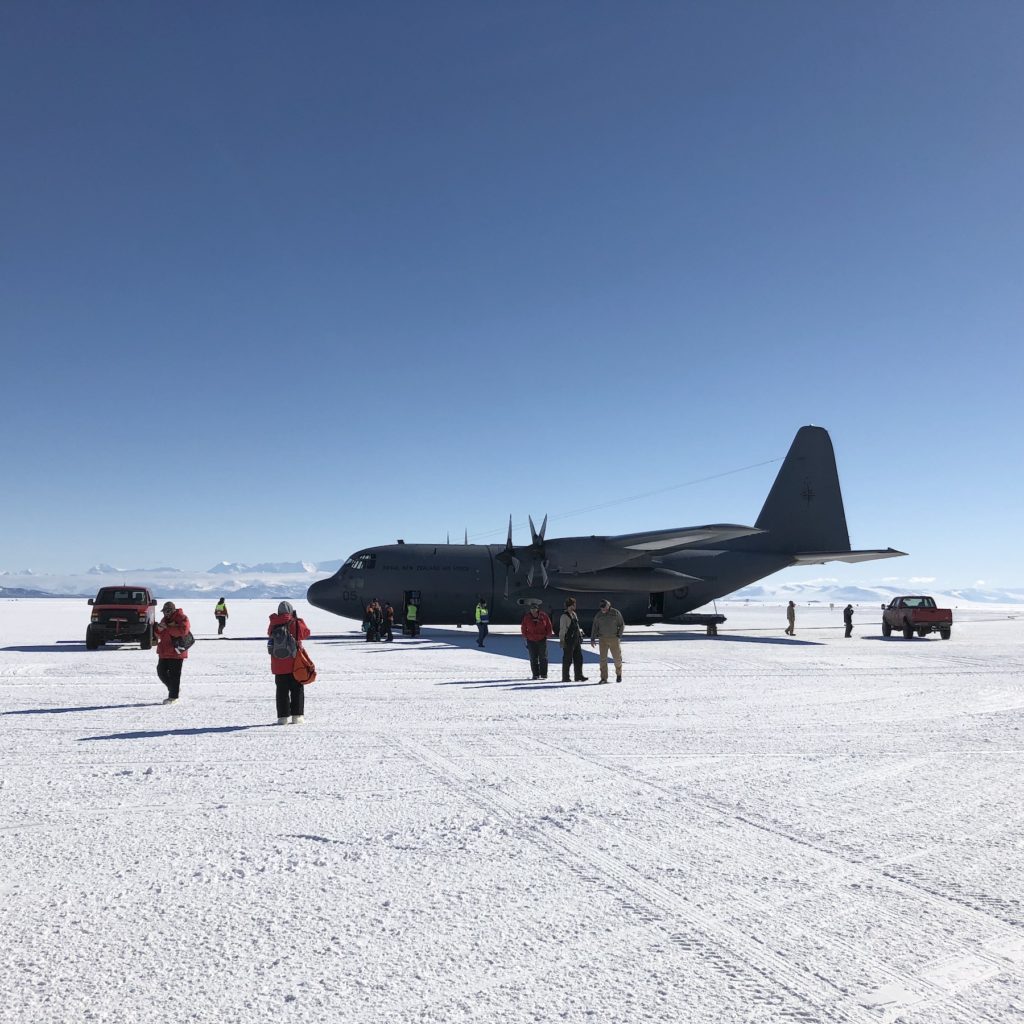 Safe landing!
Safe landing!
There are almost 1,000 people at McMurdo Station at this time of year. Many are seasonal workers who handle the complex operations of housing, feeding and providing logistical support for science in the Antarctic. Helicopters and planes buzz in all directions taking research teams to the nearby McMurdo Dry Valleys, to more distant field camps and to the South Pole Station.
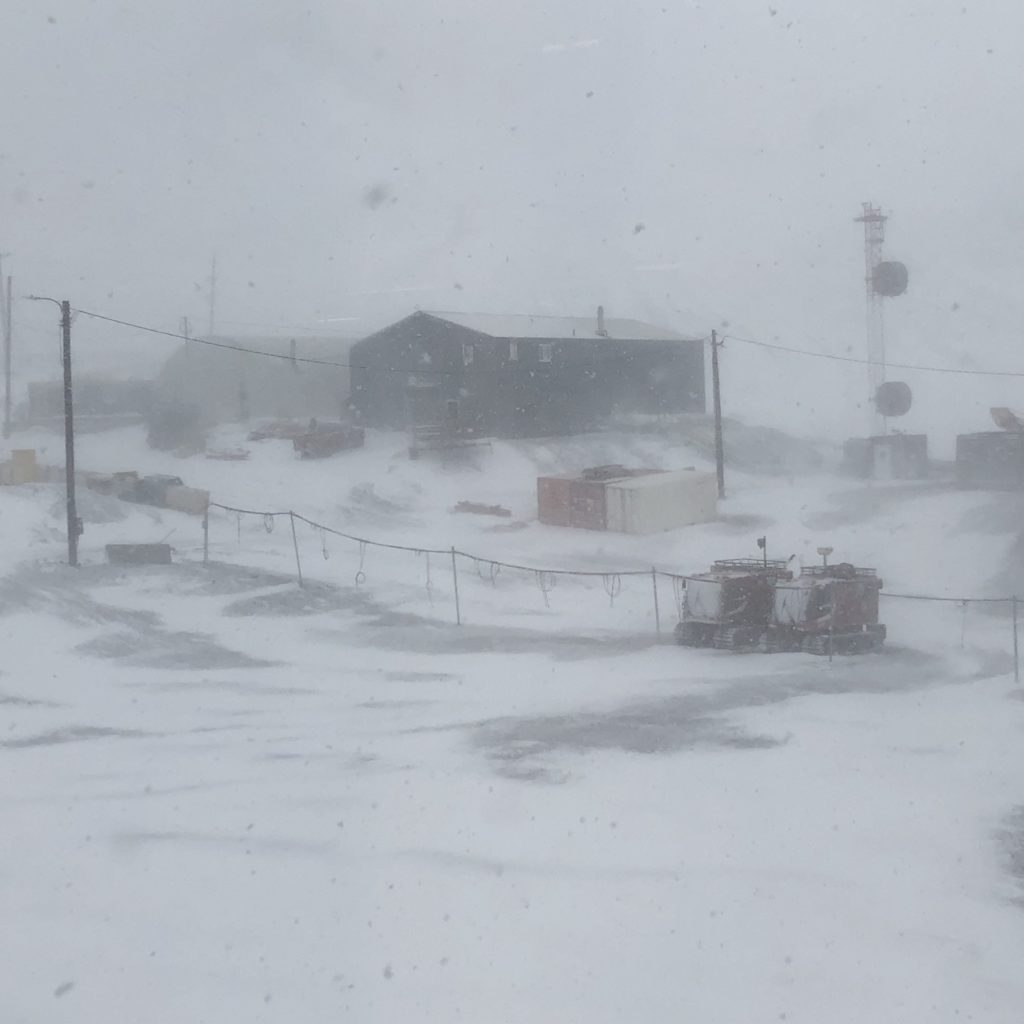 McMurdo Station in stormy weather.
McMurdo Station in stormy weather.
There are a wide range of research projects from geology, glaciology and climatology to biology, ecology and astronomy. Our dorm rooms are comfortable, and the food in the cafeteria is amazingly plentiful and good. We have office and lab space in a research building where the hallways are festooned with specimens, maps and posters of research projects.
In this phase of our project we are required to take classes in field safety, ice travel, crevasse rescue, snowmobile repair and operation, environmental impact mitigation, and communications protocols for our field work, as well as lab safety, waste management, fire, medical, and transportation training for our time at McMurdo Station. We even had a harassment workshop from Human Resources. Although we developed a logistical plan long before we arrived, much of our time is spent refining those logistics and packing tools, equipment and food for our field camps. We hope to be able to head out to our field sites around Monday, Dec. 17, weather permitting.
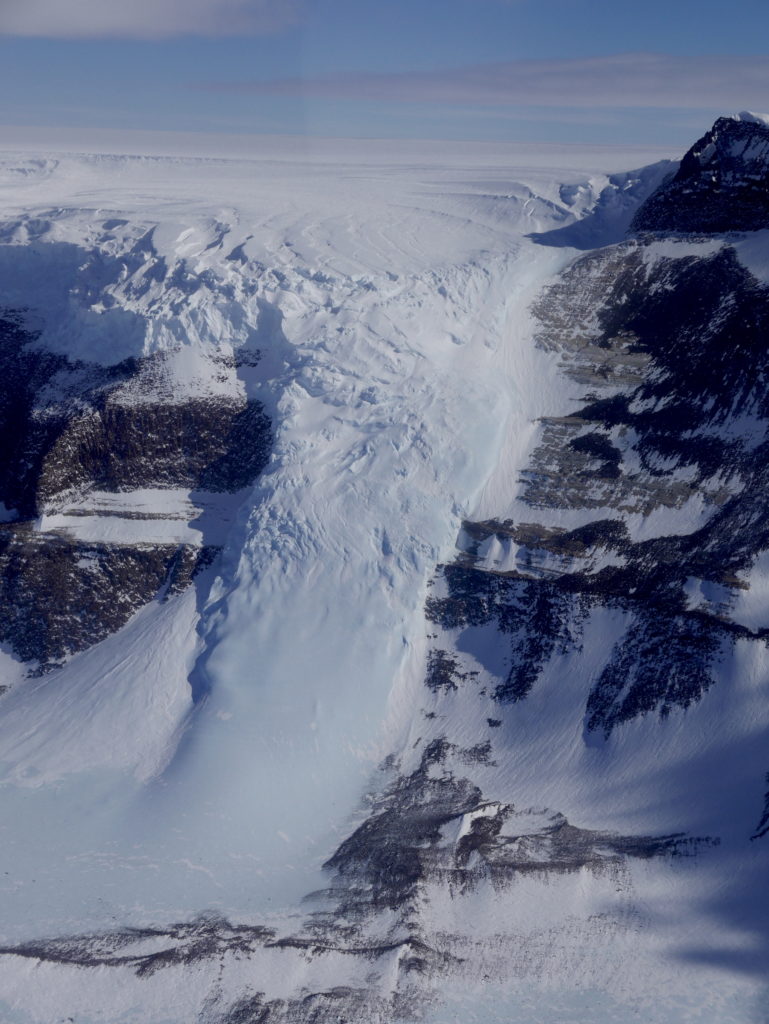 Icefall near Portal Mountain.
Icefall near Portal Mountain.
The team is basically the same as our first expedition in 2016-2017. Neil Shubin of the University of Chicago, Adam Maloof of Princeton University, John Long of Flinders University in Australia, Tim Senden of Australian National University, and myself are the scientists, and we are joined this year by Forrest McCarthy, a “mountaineer” with much experience in Antarctic field work. We are a seasoned group with much field experience, including lots of polar work. We have similar scientific interests, and are comfortable together, with lots of camaraderie and laughter.
Our field sites are in the Transantarctic Mountains, about 50 miles south of our previous sites. The logistics will be very different from the previous expedition, however. This time we will be camping on and traveling across the Deception Glacier, a relatively small glacier adjacent to the Skeleton Neve.
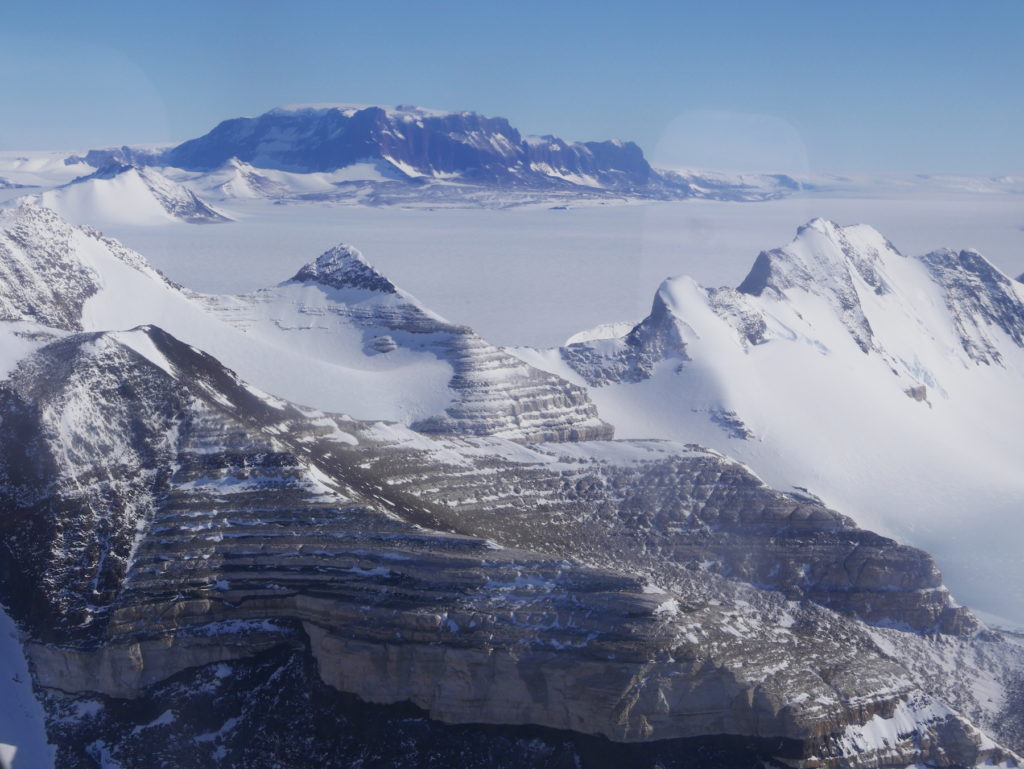 Parts of Boomerand and Warren Ranges.
Parts of Boomerand and Warren Ranges.
We will use snowmobiles on the glacier to access ridges and peaks that protrude through the ice cap to form the Boomerang Range and the Warren Range. Some of those rock exposures include the Aztec Siltstone, the 385- to 390-million-year-old rock formation that has produced Devonian-age fossil fish. Since we’ll be focused on these rocks and fossils more than anyone has ever done before, we hope that our work will result in a large and interesting sample of fossil specimens from this formation.
On Thursday we were able to take a reconnaissance flight over the field area. Our team went to the airfield and loaded into a Twin Otter aircraft, the same kind that will make several flights next week to put us in the field. Our sites near Deception Glacier are about 110 miles southwest of McMurdo Station.
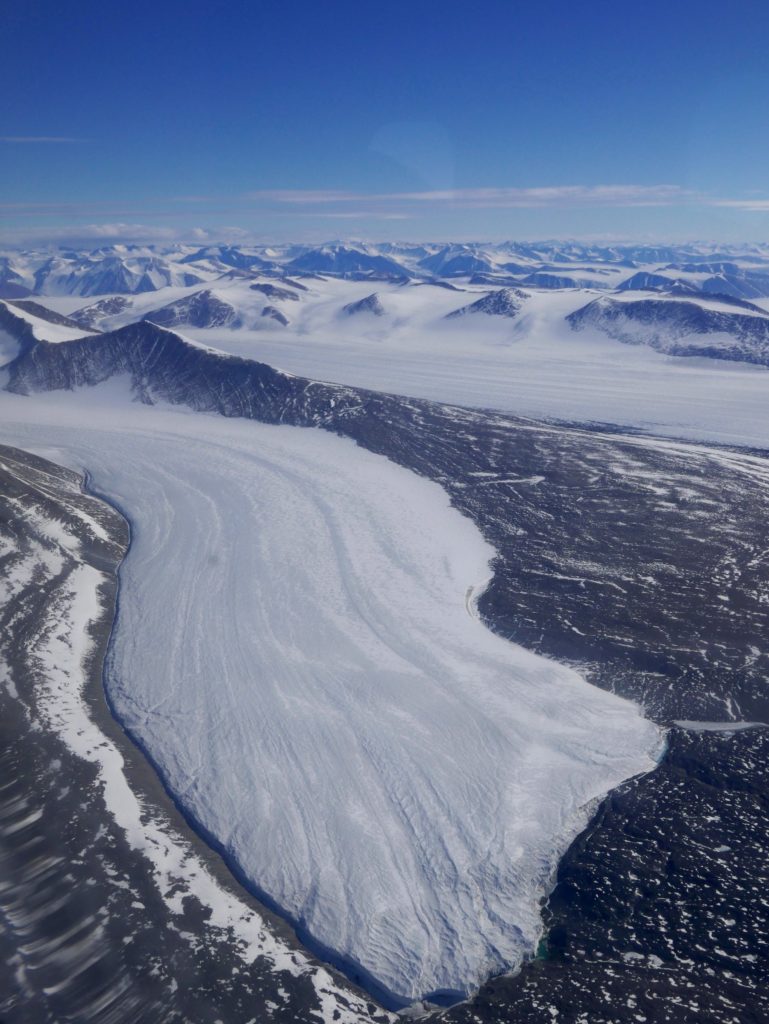 Hobbs Glacier near McMurdo Station.
Hobbs Glacier near McMurdo Station.
Our pilot flew low and slow over many of the rocky outcrops that we plan to investigate on the ground. We were able to refine our target areas, as well as consider the best location for our basecamp. The pilot even tested a couple of possible landing zones for future use. It was a wonderful day and stoked our desire to get out there and start exploring!
Stay tuned for the next report as we prepare to get out there.
Text and Photos by Ted Daeschler, PhD,
To watch a video interview with Ted that explains his Antarctic research expedition, click here and see the first post in this series.